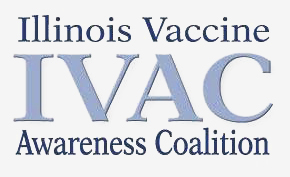American Academy of Pediatrics Publishes New Policies to Boost Child Immunization Rates
8/29/2016
AAP.org
AAP offers advice for pediatricians in counseling families to vaccinate their children; urges states to enact policies to support high immunization ratesElk Grove Village, IL – Most parents who are hesitant about vaccines are not opposed to immunizing their children, but rather are unsure or have questions. And the best source of answers is their pediatrician.To equip pediatricians for these conversations, the American Academy of Pediatrics is publishing a new clinical report, “Countering Vaccine Hesitancy” in the September 2016 Pediatrics (published online Aug. 29). The AAP advises pediatricians to have compassionate dialogues with parents to clear up misconceptions around vaccines, provide accurate information about the safety and importance of vaccines, and strive over time to help parents make the decision to vaccinate their child.
To protect all children in every community, the AAP also urges state governments to enact policies that will result in high immunization rates. In the policy statement, “Medical Versus Nonmedical Immunization Exemptions for Child Care and SchoolAttendance,” published the same day, the AAP recommends only medical exemptions be allowed for vaccine requirements for child care and school attendance.
“Parents, pediatricians, and policy-makers all have a role here in protecting children from diseases like measles and whooping cough,” said AAP President Benard P. Dreyer, MD, FAAP. “As pediatricians, we care about every individual child in our practices, and we know that vaccines are an important way to protect them from disease. We also care about the broader communities where our patients live, play and learn, and high immunization rates are critical to keeping disease outbreaks at bay. No child should have to suffer through a disease that could have been prevented by a vaccine.”
According to the AAP, non-medical exemption laws have failed.
“It’s clear that states with more lenient exemptions policies have lower immunization rates, and it’s these states where we have seen disease outbreaks occur as the rates slip below the threshold needed to maintain community immunity,” said Geoffrey R. Simon, lead author of the medical exemptions policy statement and immediate past chair of the AAP Committee on Practice and Ambulatory Medicine.
“Non-medical exemptions to immunizations should be eliminated.”
Unvaccinated children are often geographically clustered, creating pockets in a community with a higher vulnerability to disease. In January 2015, for example, a measles outbreak occurred in California, where an estimated 3 percent of kindergartners had a non-medical exemption from the measles, mumps and rubella (MMR) vaccine. Unimmunized children acquired measles during this outbreak.
High community immunization rates protect vulnerable individuals, including children who cannot be vaccinated because of medical problems or because they are too young to be vaccinated. The AAP recommends public health authorities release immunization rate data for individual schools and communities, so that parents can make decisions about their children’s safety in those settings.
Recent disease outbreaks show how critical vaccines remain for children’s health, said Kathryn M. Edwards, MD, FAAP, an author of the clinical report on vaccine hesitancy and a member of the AAP Committee on Infectious Diseases.
“People today may not remember that before vaccines, diseases like whooping cough, measles, polio, meningitis, and diphtheria sickened and claimed the lives of thousands of children and adults each year in the United States,” Dr. Edwards said. “Serious disease can occur if your child and family are not vaccinated.”
In the United States 2009 birth cohort, routine childhood immunization will prevent about 42,000 early deaths and 20 million cases of disease, according to the report, saving $13.5 billion in direct costs and $68.8 billion in societal costs. According to the AAP, the recommended immunization schedule is the only one that has been tested for safety and effectiveness. Non-standard schedules have not been evaluated.
The AAP urges pediatricians to address the specific concerns individual parents may have about vaccines, noting that one-on-one contact with an informed, caring and concerned pediatrician is the “single most important influence” on parents’ acceptance of vaccines. In one study, 80 percent of parents said their decision to vaccinate was positively influenced by their primary care provider. If after counseling efforts are exhausted, parents decline immunizations, the AAP says pediatricians may request that they sign a vaccine refusal form and/or seek care from a different health care provider. Unimmunized children are at risk of vaccine preventable diseases and in a practice setting also create risk of disease outbreaks in young infants and those children who medically cannot be immunized.
“Pediatricians know some parents have concerns about vaccines, and the best way to answer these questions is by discussing them with the doctor,” said Jesse Hackell, MD, FAAP, an author of the vaccine hesitancy clinical report and member of the AAP Committee on Practice and Ambulatory Medicine. “Both parents and pediatricians are in agreement in wanting the best for a child’s health and well-being.”
